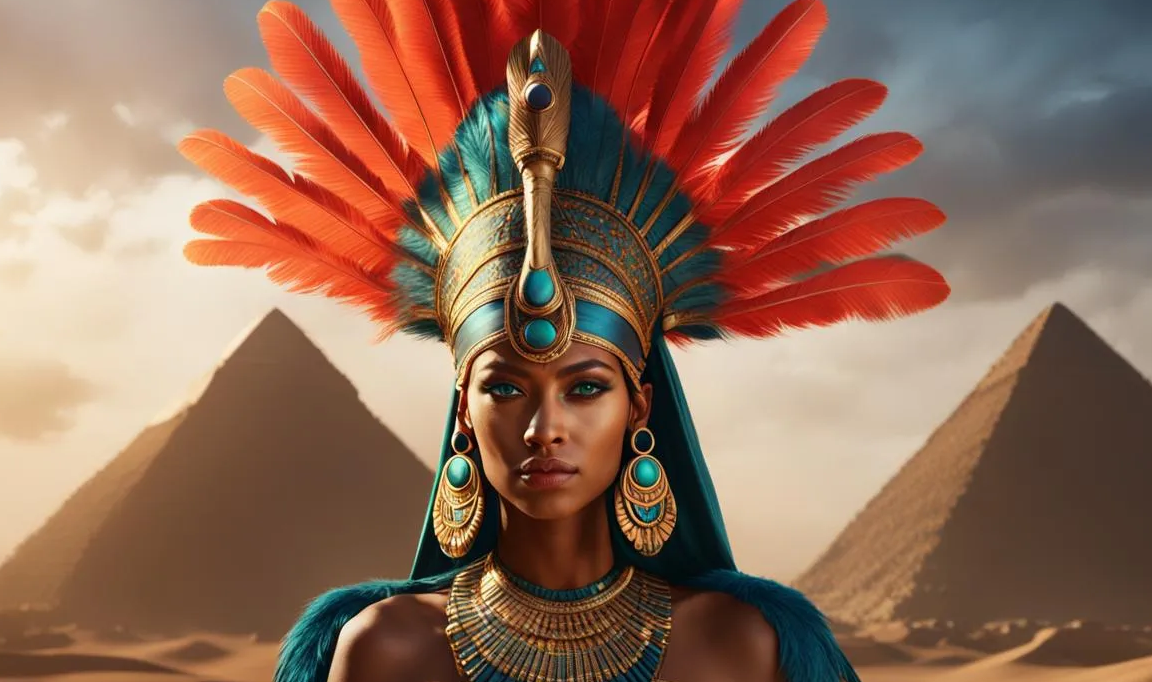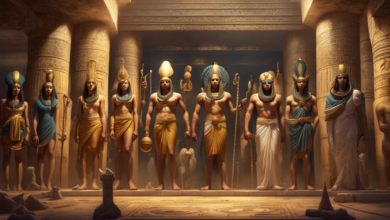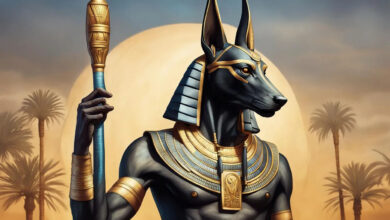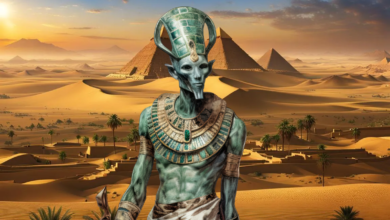Ma’at is a concept that lies at the very heart of ancient Egyptian culture and cosmology, embodying truth, justice, harmony, and balance. Unlike the gods and goddesses of the Egyptian pantheon who personify aspects of the natural world or human condition, Ma’at represents an abstract principle that governed the universe, the society, and the individual lives of the ancient Egyptians. It was both an ideal to aspire to and a cosmic force that maintained the order of the universe against the forces of chaos.
The personification of Ma’at is depicted as a goddess wearing an ostrich feather, or the feather alone, which she carries on her head. This feather became the symbol through which the hearts of the deceased were weighed against in the Hall of Ma’at during the judgment of the dead. The heart, believed to be the seat of the soul, had to be as light as the feather of Ma’at to pass into the afterlife, symbolizing a life lived in accordance with the principles of truth and righteousness.
Ma’at’s significance transcended the metaphysical, deeply influencing the legal and social systems of ancient Egypt. Kings, or pharaohs, were considered the primary upholders of Ma’at, responsible for ensuring that their reign brought prosperity and stability by adhering to its principles. This divine duty was depicted in temple reliefs and royal decrees, where the pharaoh was shown making offerings to the goddess Ma’at or presenting her image as a symbol of their commitment to uphold cosmic and social order.
The concept of Ma’at also permeated the everyday lives of the ancient Egyptians. It was a guide for moral and ethical conduct, emphasizing the importance of honesty, social justice, and harmony in community relations. Ma’at dictated that individuals should live in a way that maintained the balance of their society, respecting others’ rights and fulfilling their duties. This included practices ranging from the fair distribution of food and goods to the proper performance of religious rituals.
Ma’at’s antithesis was Isfet, the embodiment of chaos, falsehood, and injustice. The eternal struggle between Ma’at and Isfet reflected the Egyptians’ understanding of the world as a place of inherent duality and balance, where the maintenance of order required constant vigilance and effort. The fear of falling into chaos if Ma’at was not upheld was a powerful motivator in Egyptian society, influencing everything from the construction of monumental architecture to the detailed regulations of daily life.
In the realm of philosophy and religion, Ma’at was seen as the underlying reason for the creation of the world by the sun god Ra. According to myth, the world was created out of chaos, with Ma’at being established as the principle that allowed the gods, humans, and the natural world to coexist harmoniously. This cosmological aspect of Ma’at underscores its role as a foundational element of ancient Egyptian religion, providing a framework through which the universe operates and is understood.
The legacy of Ma’at in modern times is a testament to its profound impact on ancient Egyptian culture. As a concept, it offers insight into the Egyptians’ sophisticated understanding of morality, ethics, and the cosmos. Ma’at’s emphasis on balance, justice, and harmony continues to resonate, highlighting the universal quest for order and meaning in the human experience. Through the study of Ma’at, modern scholars and enthusiasts gain a deeper appreciation for the complexities of ancient Egyptian thought and the enduring power of its cultural ideals.





